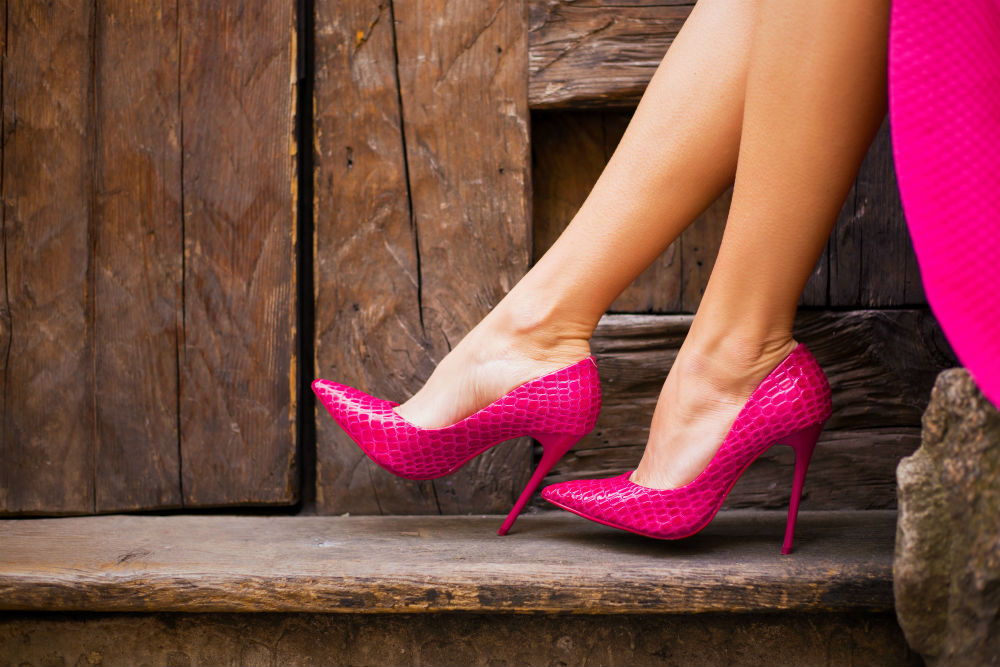
Image Source: Google
High heels have been a staple in women's fashion for centuries, with their ability to add height, sophistication, and style to any outfit. However, beyond aesthetics, there is a science behind high heels that affects not just how women look, but also how they feel and move. If you need more information about women high heels, you may visit XY London.
Let's delve into the impact of high heels on women's confidence and posture, backed by scientific research.
The Psychological Impact of High Heels
Boosting Confidence
- High heels are often associated with power, elegance, and femininity, leading many women to feel more confident when wearing them.
- A study published in the "European Journal of Social Psychology" found that women who wore high heels reported higher levels of self-esteem compared to when they were wearing flat shoes.
- The elevated heel can create a sense of empowerment and assertiveness, influencing how a woman carries herself and interacts with others.
Enhancing Perception
- High heels can alter the way others perceive a woman, often leading to her being viewed as more attractive, competent, and successful.
- Research from the University of Portsmouth revealed that women in high heels were consistently judged as more confident, attractive, and with a higher social status than those in flat shoes.
- This enhanced perception can have a positive impact on various aspects of a woman's life, from professional opportunities to social interactions.
The Physiological Impact of High Heels
Altering Posture
- High heels force the wearer to shift their posture, causing an arch in the lower back and an extension of the buttocks, which is often perceived as more attractive.
- However, this adjustment in posture can lead to an increased risk of musculoskeletal issues, such as lower back pain, foot deformities, and joint problems.
- A study by the University of North Carolina at Charlotte found that wearing high heels regularly can contribute to muscle imbalances and instability in the ankles and knees.
Affecting Gait and Balance
- Walking in high heels changes the natural gait pattern, placing more pressure on the forefoot and toes while limiting the range of motion in the ankle.
- This altered gait can lead to a shorter stride length, reduced walking speed, and increased risk of falls or ankle sprains.
- Research published in the "Journal of Experimental Biology" suggests that wearing high heels shifts the body's center of mass forward, requiring greater muscle activity to maintain balance.
Mitigating the Effects of High Heels
Choosing the Right Heel Height
- Opt for heels that are no higher than 2 inches to minimize the strain on the feet, ankles, and lower back.
- Wearing kitten heels or wedges can provide a more stable base and distribute weight more evenly compared to stilettos.
- Consider using heel inserts or cushions to provide additional support and cushioning for the feet.
Strengthening Muscles and Stretching
- Engage in exercises that target the muscles of the feet, ankles, calves, and core to improve strength and stability.
- Regularly stretch the calves, hamstrings, and hip flexors to counteract the tightening effects of wearing high heels.
- Practicing yoga or Pilates can help improve posture, alignment, and body awareness, which can benefit heel wearers.
Conclusion
High heels undoubtedly have a significant impact on women's confidence and posture, both psychologically and physiologically. While they can boost self-esteem and create a sense of empowerment, they also come with potential risks to musculoskeletal health and balance. By understanding the science behind high heels and taking proactive measures to mitigate their negative effects, women can continue to enjoy the style and sophistication that high heels offer without compromising their well-being.